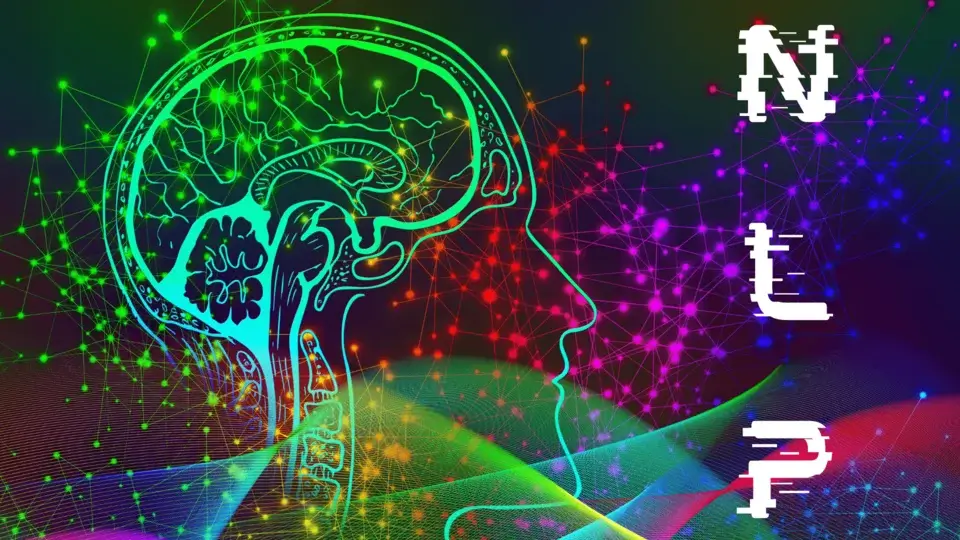
All about Neuro-linguistic programming (NLP) uses perception, behavior, and communication techniques for people to change their thoughts and actions and achieve better outcomes.
NLP is based on language processing but should not be confused with natural language processing, which is different from Neuro-linguistic programming.
The concept of Neuro-linguistic programming was developed by Richard Bandler and John Grinder, along with a few of their friends. They made a framework and believed that it was possible to recognize the thought and behavior patterns of successful people and teach them to other individuals.
Table of Contents
What is NLP?
Neuro- refers to the mind or brain, especially in relation to how states of the mind(and body) affect communication and behavior. It teaches a structural view of the states of the body and mind and develops mind maps that show how internal thoughts take place and how to change the course.
Linguistics-It means that our mental and bodily states are expressed in our language and non-verbal communication.
Language is the tool we use to access the inner map of the mind.
NLP language patterns teach us to access unconscious information that would otherwise remain vague and unrecognizable.
Programming-refers to the ability to change our mental and bodily state. You heard the term life on autopilot, right? For someone skilled, this would mean living according to their programming, which is made up of habitual thoughts, feelings, reactions, beliefs, and traditions. Someone trained in neuro-linguistic programming knows how these programs are structured in the head and how to access them through conversation in order to change outdated programs and autopilot behavior.
How does NLP works?
It has many different definitions, but it is based on the core idea that people operate according to internal maps of the world that they learn through sensory experiences.
NLP attempts to recognize and modify the unconscious biases or limitations of the individual world map.
NLP is not hypnotherapy. Instead, it works by consciously using language to cause changes in someone’s thinking and behavior.
For example, a core feature of NLP is the idea that a person focuses on a sensory the system is known as the Preferred Representation System or PRS. Therapists can recognize this preference through language.
An NLP practitioners will identify a person’s PRS and base their therapeutic framework on it. The framework could include building relationships, gathering information, and setting goals with them.
There are many powerful techniques with which NLP influences the outcomes and behaviors. Below are a few techniques and methods to give you an idea about NLP application in real life.
1. Image Training
This technique is also termed a mental rehearsal. It is one of the classic visualization-based neural language programming techniques.
For beginners, this is a good exercise because it is simple and easy to follow. The technique is to create a highly detailed scene that allows you to successfully perform an action, whether it’s performing on stage or nailing a presentation. Imagine your body language to be confident, firm, and comfortable. Feel the self-confidence and the energy that surrounds you. Be as detailed as possible.NLP techniques like this create absolute certainty in yourself and your abilities.
2. NLP Swish
NLP swish is an advanced level technique of NLP. In this technique, you have to frame a picture in your mind that you don’t want. Then create another picture that you want. Now reverse them and make the picture that you want bigger and brighter. Drop the picture that you do not want. Make it dull and colorless. Repeat this technique a few times, and this way, you will train your mind to amplify the positives and weaken the negatives.
3. Anchoring
In this technique, anchor points have to be established linking the external stimuli to the existing experiences. Any of the sensory channels like images, sounds, feelings, smells, and tastes can be used to establish the link. This the technique gives you the ability to evoke any state at your desired will. You can anchor any given state and can have your own button like trigger, and you can use it to activate it when you need to access that state.
5. Sub-modality change patterns
Our minds operate with a language of their own. Understanding this language and its impact on our minds empowers you to make changes in your neurology. Instant change of perception, beliefs, motivation can open infinite possibilities for best opportunities to tap to. Sub-modality change patterns are all about that. They reorganize the patterns someone experiences reality.
6. Threshold Patterns
Sometimes people are not able to put their stuff together due to their previous unhealthy patterns. The mind and the body get caught in a loop, and the same pattern of behavior occurs again. The threshold pattern, also known as a compulsion blowout, is the tool of your choice for getting your mind-body get rid of the behaviors which are not serving you. The threshold pattern technique of NLP shows the HOW for this.
7. Timelines
The timeliness technique is very effective for creating change and helps you to get a fulfilling life. Timelines help you by giving you a powerful way to let go of emotional pain and transform old self-limiting stories and install new ways of feeling and having a bright future. With this technique, we can help you interact with memories of events, access old inputs, and bring changes back in the past and generalize those changes all the way to the present.
8. State Interrupt
State interrupt pattern is a powerful tool to stop run-away stress, break up theconflict and de-escalate tension. This is the best technique for you, whereinyou can change the natural pattern of thought. This technique is helpful invarious aspects and areas. It is helpful to professionals in a variety ofsituations dealing with sales especially.
9. Priming
Priming occurs when exposure to something can change behavior or think later. It is a technique that gives exposure to the stimulus and affects the behavior of the individual, without even allowing the individual to realize that the first thing he hears or exposes is his behavior or response. For example, if a kid sees a bag of cookies next to a brown bench. He may start looking for or think of cookies the next time he sees the bench.
10. Building Rapport
Building rapport at the beginning of the work meeting helps to build a relationship that will increase your ability to be trusted. Building rapport includes using the same tone, same keywords, and the same posture as the other person. This technique is helpful in all aspects of our life. Imagine how much you can succeed in life if you learn to create easy and comfortable relationships, to make people at ease so they can open up and feel safe around you and trust you.
11. Reframing
A picture or an event looks and feels completely different in a new frame. Under this technique, a problem is reframed, giving it a new meaning. A new meaning gives new reactions and new behaviors. Reframing is the process of reinterpreting and taking up a new perspective of the same event. For example, during sports events, if athletes are asked how they are feeling, they always say that they feel excited instead of stressed.
What is most interesting is that the symptoms of stress and excitement are the same:sweaty hands, short breath, and accelerated heart rate. This is how this technique does wonders.
12. Mirroring
This technique is similar to the building rapport that we had mentioned above. It is an NLP technique that uses body language to establish instant contact with anyone and establish a harmonious and friendly relationship with them. If someone has high energy, match your energy level with them. You can also change the words that you use to match their vocabulary.
You will seem to be trustworthy instantly to them by mirroring them.
Different NLP Levels
NLP Foundational is the first level of training in NLP. Generally speaking, no NLP experience is required, and anyone can sign up. A training course for NLP practitioners involves learning the basic elements of NLP, as well as the techniques for combining these elements in order to apply them skillfully and gracefully. This training teaches a variety of skills and strategies for success and value creation in life.
At the NLP Practitioner level, participants develop skills to change beliefs and values in themselves and in others that are better suited to their lifestyle, family, and work system. NLP practitioner program generally includes developments in communication techniques. This includes quantum linguistics, the discovery, and retraining of
unconscious behavioral skills, and why people think differently, and how they do it, what are our individual values.
At the NLP Master Practitioner level, the training covers filters for the personality metaprograms, including advanced strategies, advanced NLP sub-modalities, and also advanced linguistic negotiation. Attending the master’s course is critical to completely transform your business, your health, and your relationships. Attending this training will allow you to expand and benefit significantly in every area of your life. It will also train aspiring coaches to become practitioner coaches.
You can take in-depth NLP training from Dr. Anil Sureen Coaching Institute. You will be trained in NLP programs – Foundational NLP, NLP Practitioner and NLP Master Practitioners. We teach NLP programs that allows you to discover your identity as a trainer and as a facilitator, making a difference in people’s lives. This training prepares individuals to become charismatic and transformative facilitators. It teaches skills and techniques to influence groups successfully, to understand, analyze and coordinate group processes, as well as to master the skills to be a charismatic moderator. Upon completion, participant will be able to confidently present themselves to groups of all sizes.
An NLP trainer is not only competent in NLP but also in life coaching. They use NLP tools during their coaching sessions to guide the participants through the phases of a coaching session, introductory talk, information gathering, transformation, and integration.
A confident NLP trainer can switch between various techniques and models and use specific techniques as needed during a training session.
If you need more information on NLP; you can read our more blogs on:
Positive impacts of NLP in every area of your life
Soar your sales with NLP techniques
NLP for Business
If you want to take up courses on NLP, you can contact us to guide you more on this.

